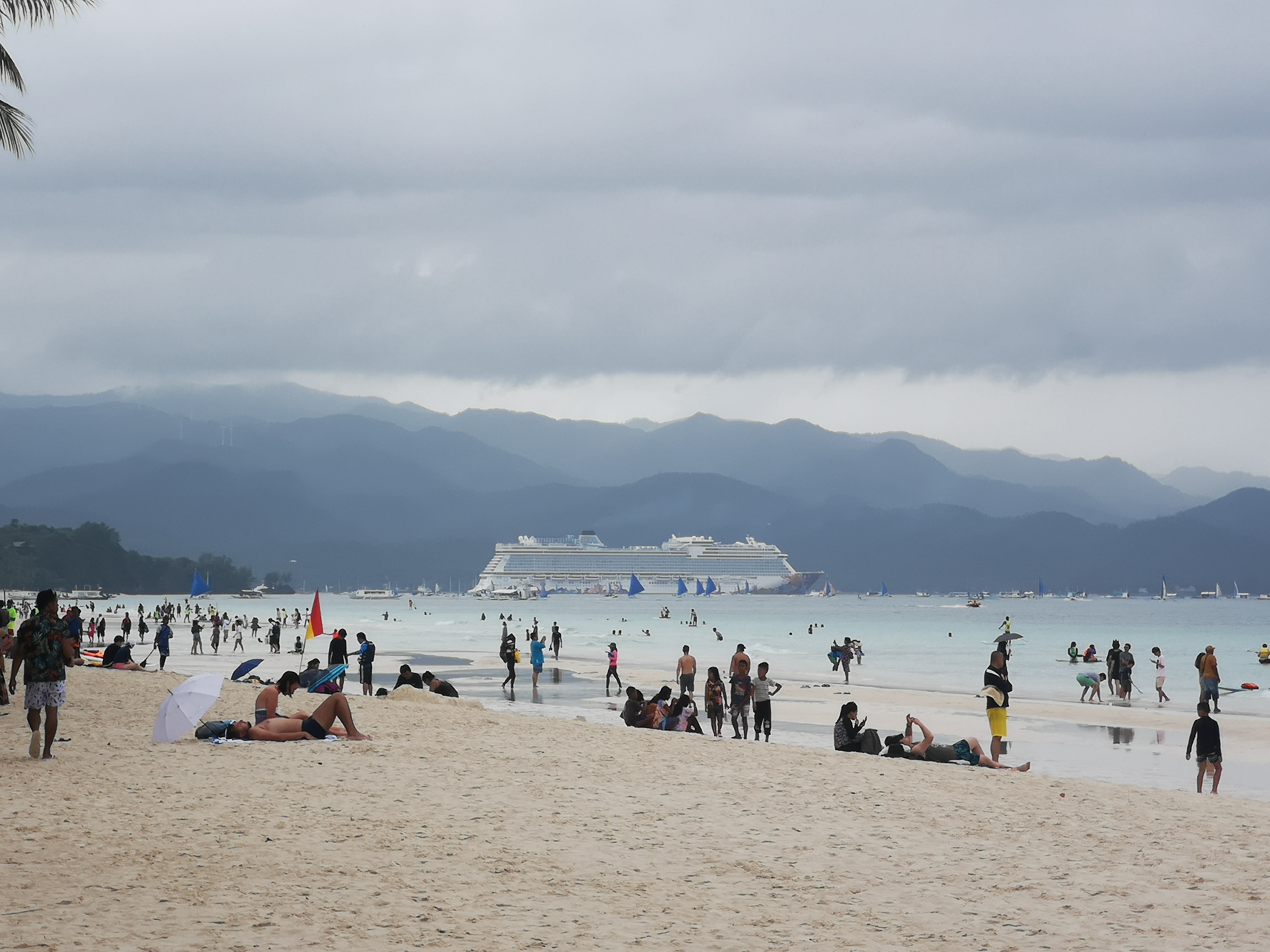
‘NOTHING BUT CONGESTION’A cruise ship anchors off Boracay waiting for its passengers to come aboard after just a few hours on the world-famous island. —CONTRIBUTED PHOTO
ILOILO CITY — A group of stakeholders in Boracay is calling on the government to address problems plaguing tourists and residents, less than two months after the island reopened to tourists.
In a letter addressed to the Boracay Inter-Agency Task Force (BIATF), the group of residents and business operators urged government agencies to, among other things, install lights along the beach for the safety of tourists, ban cruise ships from dropping anchor off the island and stop public transport drivers from overcharging passengers.
“It was a painful experience for us who live and work here, especially [since] many of us were compliant and fighting for Boracay’s environment prior to the government-mandated closure … We write you in [the] hope that all of the sacrifices made in the name of Boracay, that your work and effort during closure will not have been in vain,” the group’s letter read in part.
Citing feedback from tourists, the stakeholders said that while standard rates were provided by the Boracay Land Transport Multi-Purpose Cooperative, tourists were usually charged exorbitant rates for special or chartered trips.
Standard rates
The group urged the task force to ensure that more public transport vehicles be allowed to provide rides at standard rates.
Transport personnel or checkers should also be deployed to ensure that rates are being followed, it said.
Even before the island closed for six months from April 26 to Oct. 25 for rehabilitation, residents and tourists alike had been complaining of exorbitant transportation rates.
After the island’s reopening, residents now have difficulty getting rides during peak hours, as tricycle drivers prefer to cater to foreign tourists, the stakeholders said.
Students should also be provided with school vehicles so they would have available transportation, they added.
The BIATF was also urged to provide a clearer and adequate system to regulate the number of tourists on the island and keep its carrying capacity at manageable levels.
TIME TO WORRY The Boracay travel trade says it is concerned about the safety of tourists. —MARIANNE BERMUDEZ
Carrying capacity
The carrying capacity refers to the maximum number of people that can be sustained by the environment.
“Currently, there is no [defined and adequate] entrance controls [in] Boracay … [A]t times the carrying capacity [is] exceeded. Furthermore, many individuals book one night but stay longer, thus there is no system [to] actually control how long people are staying,” the group said.
While there is policy against vendors and peddlers of water sports and activities along the beach, the vendors can be found in side streets and other areas where tourists flock.
The stakeholders said designated areas should be provided for public markets and vendors that were accessible to tourists.
They are also calling for a ban on cruise ships that drop anchor off Boracay and bring thousands of tourists to the island for just a few hours.
“The cruise ships bring the island nothing but congestion and garbage,” they said.
They pointed out that top tourist destinations in other countries had already banned cruise ships due to their effect on the environment.
“If Boracay is going to be representative of environmental sustainability, we should follow suit and ban cruise ships from Boracay,” they said.
The group also pointed out that the tourists brought by cruise ships strained the carrying capacity of the island while “barely [bringing] business to the establishments as [the tourists] already have their own food and drinks from the ship.”
The Department of Environment and Natural Resources earlier pegged the carrying capacity of Boracay at 55,000 at any given time. This includes 19,215 tourists and about 36,000 residents.
Cruise ship ban
The number of tourist arrivals should be limited to 6,405 daily in order to meet the island’s carrying capacity, the stakeholders said.
Environment Undersecretary Benny Antiporda said the agency would look into the concerns of the stakeholders, especially the banning of cruise ships.
He maintained, though, that the cruise ships did not affect the carrying capacity of the island.
“[They don’t] strain the carrying capacity of the island because cruise tourists don’t stay long on the island, they don’t even swim on the beach. They are just there for sightseeing,” he said in a text message to the Inquirer.
Antiporda said the carrying capacity was based on the number of people on the “beach front and the swimming areas only.”